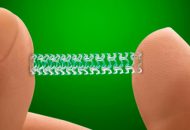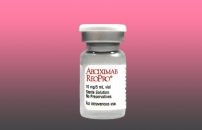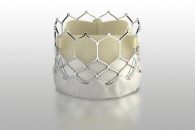Courtesy of Dr. Rodrigo Abreu. INTRODUCTION Bifurcation lesion treatment has evolved considerably in the last years: from balloon angioplasty (with high occlusion and restenosis rates) to bare metal stent angioplasty (with a procedural success around 86% and major adverse cardiac events [MACE] at 1 year around 32%). The subsequent emergence of drug-eluting stents (DES) reduced…
BVS: Safe and Effective in the Infrapatellar Area
Courtesy of Dr. Carlos Fava. Drug-eluting stents (DES) have shown mid-term benefit in lesions below the knee (BTK) by reducing the rate of acute occlusion and restenosis in type A and B lesions. However, failure to recover the self-regulatory functions of the local vessel could hinder future revascularization. Drug-eluting bioresorbable scaffolds (BVS) could be a solution to this problem.…
Angiosome: Is It Feasible in Critical Limb Ischemia?
Courtesy of Dr. Carlos Fava. Critical limb ischemia (CLI) accompanied by tissue loss entails high risk of amputation. At present, there is substantial evidence in favor of revascularization by PCI according to the angiosome concept, but the feasibility of this treatment remains unclear. 161 compromised limbs were analyzed in 160 patients with foot…
Coronary Perforation in PCI: Associated to Negative Outcomes
Courtesy of Dr. Guillermo Migliaro. Coronary perforation (CP) is a rare but serious complication of percutaneous coronary intervention (PCI) with an estimated incidence of 0.5%. Arterial blood entering the pericardium may cause a rapid elevation of intrapericardial pressure and collapse the right cavities (tamponade) creating hemodynamic compromise. Historically, surgical drainage has been the…
Anticoagulation and PCI: How Long Should Triple Therapy Last?
The aim of this study was to compare clinical outcomes in relation to the duration of triple antithrombotic therapy in patients with indications for oral anticoagulation undergoing coronary angioplasty. The optimal period for the prescription of these three drugs has not been studied. Between 2009 and 2013, 8772 consecutive patients undergoing coronary angioplasty were included…
A New Indicator to Assess Stenosis Severity
This study looked at the role of fractional myocardial mass (vessel-specific myocardial mass) in the assessment of stenosis physiological severity. Researchers used CT angiography to study this new concept of myocardial mass subtended by a specific vessel, which could reduce anatomical-physiological mismatch. The study included 463 patients with 724 lesions evaluated by multislice…
Intracoronary Abciximab reduces events in diabetics during PPCI
Diabetic patients have an increased risk of future cardiovascular events after an ST elevation MI. Administration of an intracoronary abciximab bolus during primary PCI could be beneficial for this high risk subgroup of patients. This study reports one year clinical outcomes and CMR imaging of patients randomized to intracoronary vs. intravenous abciximab during primary…
Ticagrelor: Similar to Aspirin in Patients with Stroke or TIA
Ticagrelor might be a more effective antiplatelet therapy than aspirin for the prevention of recurrent stroke and cardiovascular events in patients admitted for acute cerebral ischemia. This double-blind, controlled trial randomized 13,199 patients from 33 countries. Subjects presented a non-severe stroke or a high-risk transient ischemic attack (TIA) (not considered as cardioembolic) and had not received…
ABSORV at Long Term in Daily Practice Lesions
This work reports one year outcomes of the BVS Expand registry. Multiple studies have shown the safety and feasibility of the everolimus eluting bioresorbable scaffold ABSORB (Abbott Vascular, Santa Clara, California), but medium and long term data are limited and only on simple lesions. This is a prospective single-center registry assessing ABSORB performance in…
SAPIEN 3: Low One-Year-Mortality in High Risk or Inoperable Patients
In the first PARTNER trial (Placement of Aortic Transcatheter Valves), mortality at one year was 24% for high risk patients and 31% for inoperable patients. A recent report on SAPIEN 3 outcomes at 30 days ─ the last generation balloon expandable valve ─ showed a rather lower adverse events rate. However, additional information at longer…









